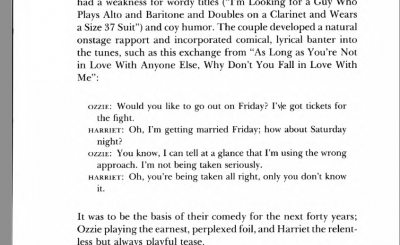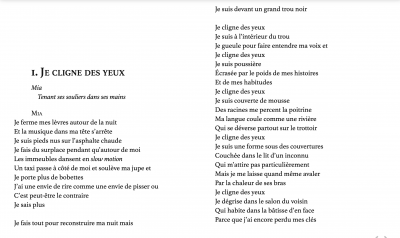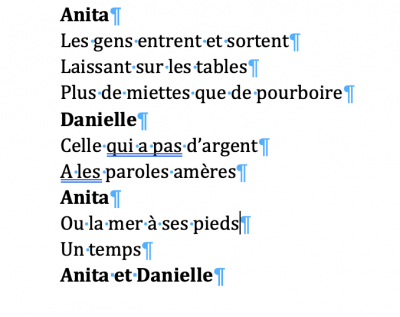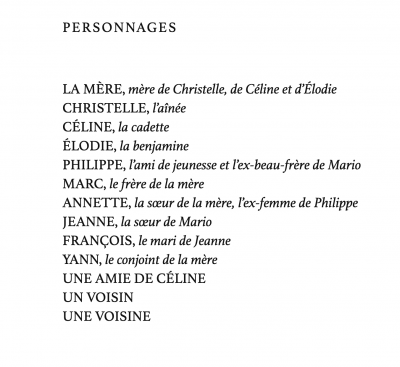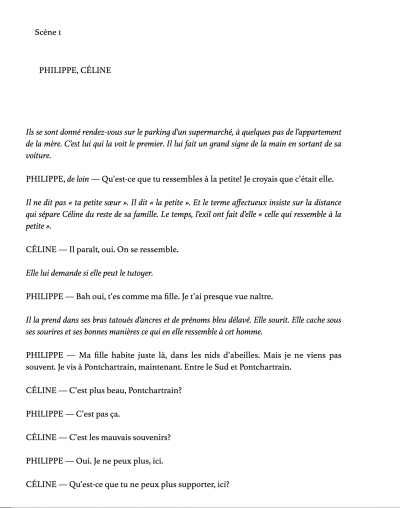Plays
A play is a work of drama, usually consisting mostly of dialogue between characters, along with stage directions, and is intended for theatrical performance rather than just reading.
We approach a written play the same way we approach other genres of ebooks. We are reformatting the written version, not creating a dramatization of the play. There are other services that do this for people with print disabilities.
For the most part, we approach plays the same way we approach other books.
Character List
Plays sometimes have Character and/or Cast List.
These should be formatted as an unordered list. This goes for any other list types within a play.
To learn more see the Unordered List Section.
Dialogue
In a play dialogue is often presented with the Character's name before the dialogue.
Vladimir: I want to know how to format dialogue
Estragon: It is actually easier to do that you would think!
Apply the Strong style to the Character name, and leave the dialogue in Normal style.
See Bold for more information
Stage Directions
The stage directions are normally marked as normal text.
Q&A Archive
Q: I'm currently working on "Teenage Idol, Travelin' Man" and in the book they will quote scenes from a stage act, see attached image. I would like to check what the most accessible way to format these sections would be. Presently, I am thinking that the text should be formatted similar to a play with the names in strong style and want to confirm whether I can also apply the quote style without reducing accessibility?
A: You can format it as a quote and play.
Q: I have three questions about Et si un soir, a French play. The first is that there is no colon or m-dash to separate speaker from text/direction. Instead, the book is formatted with the speaker on a different line than the text (ie, the separator is a paragraph tag). Is it okay to leave it like this (will the STRONG style applied to the speaker name be enough to guide the reader)?
Second, there are monologue chunks with double paragraphs between them. Should I remove the extra paragraph tags (ie, have all the monologue chunks chunked together) or should I add a line separator? Thanks!
Lastly, "un temps" is a stage direction styled in italics and meant to indicate a pause. As established, we're supposed to format stage directions as plain text. However, in this case, I'm wondering if that will create confusion for the reader because each line is so short. Thoughts?
A: For the character names. Style them in bold followed by a colon. Always remove extra paragraph tags. They cause accessibility issues. As this book has dialogue written like poetry, it is okay to keep the emphasis style. Reformat the stage directions that are on multiple lines to be separated by periods. For example, the first stage direction would become: Joseph.Devant son écran d’ordinateur. À l’autre bout de la connexion se trouve une femme. Elle porte un masque d’oiseau hideux.
Q: I'm working on Le Drap Blanc by Céline Huyghebaert. There is a cast ("personnages") of "characters" listed two pages prior to the "scene" in which they are featured. "Personnages" is not listed in the table of contents and therefore does not strike me as text that should be H1. However, if I make it H2, it'll be a heading under the previous section, not the section to which it is relevant (again, because that section comes two pages LATER).
Should I just do an H2 anyway?
A: Always follow the rule of hierarchy with headings. See Understanding Styles & Headings for more. Sometimes we create headings that are not in the original document as it makes it more accessible for navigation. Headings are the most important part of navigation to create an accessible version of a book. Apply H1 to the heading. This is also a play segment. See Plays for more info.
Q: In the play "Crippled," there are no individual scenes or acts, nor is there currently a header/title marking where the play itself begins. Assuming I should make my own header for navigation purposes, should I just use the title of the play? And should I make note of this in the "About this Digital Book" section?
A: You can enter the heading Play in Heading level 1 before the play. It the About this digital book section you can simply state: Level 1 indicates top level, section headings.
